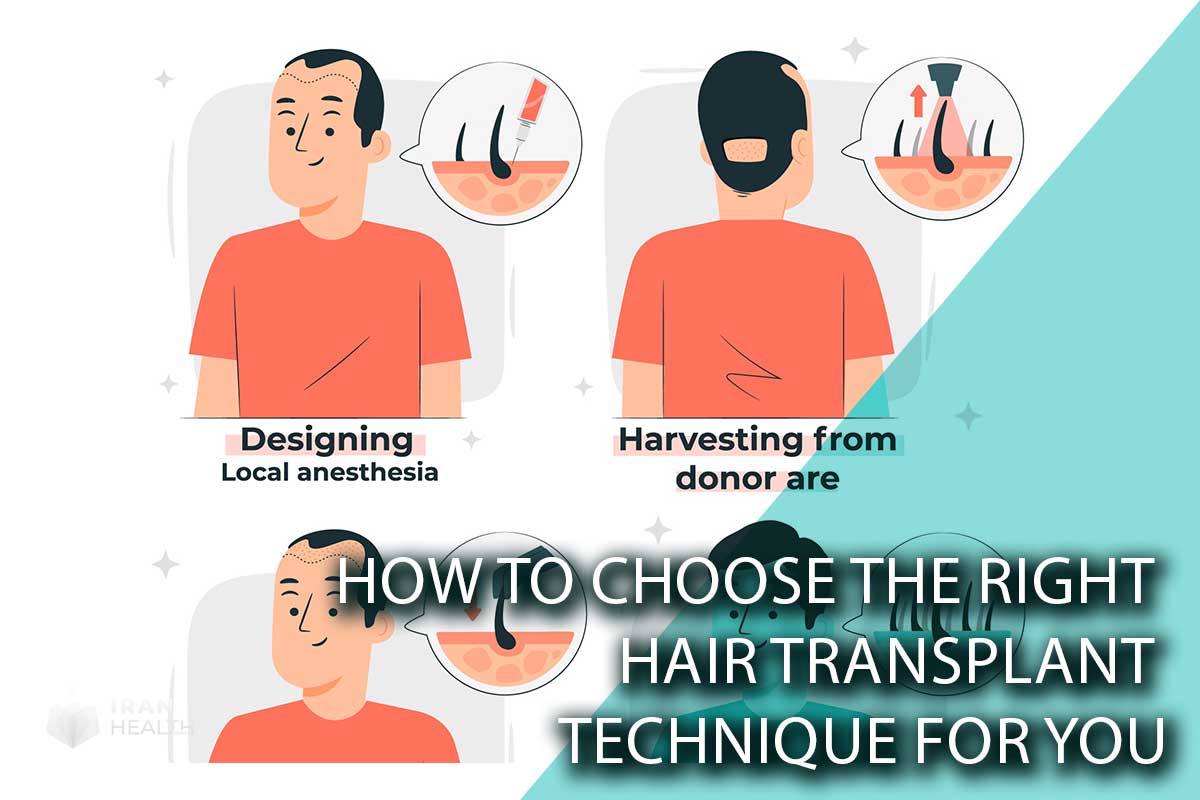A hair transplant is a procedure in which hair follicles are taken from a part of your head where hair grows well and moves to a balding or thinning area. It’s a great way to boost your confidence and improve your looks if you’re experiencing hair loss due to genetics, aging, illness, or injury.
However, not all hair transplants are the same. Different techniques, methods, and factors affect the outcome and suitability of the procedure. In this blog post, we will compare the main types of hair transplants, their advantages and disadvantages, and how to decide which is best for you.
Types of hair transplant
If you’re considering hair transplant surgery, you may have heard of two popular methods: follicular unit transplantation (FUT) and follicular unit extraction (FUE).
Both involve harvesting and implanting individual hair follicles, but they differ in how they obtain them from the donor area.
Follicular unit transplantation (FUT)
FUT, also called strip surgery, is a hair transplant technique that has been around for a while. It involves removing a strip of skin from the back or sides of the head, where the hair is usually denser and more resistant to balding. Each piece of the strip contains one to four hair follicles. These trim pieces are then inserted into tiny incisions made in the balding area.
The upside of using FUT is that the surgeon can remove many pieces in one session, covering a larger area of baldness and achieving a higher density of hair. FUT is cheaper and less time-consuming than FUE, requiring fewer sessions and less manual work.
The main disadvantage of FUT is that it leaves a linear scar on the donor area, which can be visible if the hair is short or shaved.
The scar can also cause pain, itching, numbness, or infection in some cases. FUT also requires longer recovery time and more post-operative care than FUE, as the wound needs to heal and the stitches need to be removed. FUT may also result in more damage to the hair follicles, as they are more likely to be transected or damaged during dissection.
Follicular unit extraction (FUE)
FUE, also known as follicular unit isolation, is a newer and more advanced hair transplant technique. It involves using a small punch tool to extract hair follicles from the donor area without removing the skin. The follicles are then implanted into tiny holes made in the recipient area.
FUE is a procedure that doesn’t leave a noticeable scar and is excellent for those who want to wear short hair or have a tight scalp. It’s also less painful and has fewer complications than FUT.
On the other hand, FUE is more complex and requires a skilled surgeon. It’s also more expensive and time-consuming as it requires more sessions to get the same coverage and density of hair. Plus, some of the extracted hair might not be suitable for transplantation.
FUE-based transplant technique
Here you go:
- Neograft: This is a new way of doing hair transplant that is less invasive and faster. It uses a unique tool that sucks hair follicles out and then puts them back in without making any cuts. This method is less likely to damage the follicles and doesn’t leave scars like traditional hair transplant methods.
- DHI: A new hair transplant procedure called FUE uses a pen-shaped tool. This tool can make tiny cuts and put the hair in simultaneously. This new way of doing things might give the doctors more control over how deep the hair goes in, which way it grows, and how much hair they can put in.
- Robotic FUE: This new FUE technique uses a robot arm to extract and implant hair follicles. It’s supposed to make the surgery more accurate, consistent, and efficient.
- ARTAS: This specific brand of robotic FUE uses a computer-assisted system to analyze the donor area, select the best follicles, and create a natural-looking hairline.
- Sapphire FUE: Sapphire-bladed FUE is a modified version of FUE hair transplantation. This technique uses sapphire blades instead of steel blades to create incisions for hair follicles. Research suggests it may lead to less scalp trauma, inflammation, and scarring.
How to choose the best type of hair transplant for you
There is no definitive answer to which type of hair transplant is best for you, as it depends on various factors, such as:
- The extent and pattern of your hair loss
- The quality and quantity of your donor’s hair
- The size and shape of your scalp
- Your budget and expectations
- Your personal preference and lifestyle
The best way to decide which type of hair transplant is best for you is to consult a qualified and experienced hair transplant surgeon who can assess your condition, explain the pros and cons of each technique, and recommend the most suitable option. You should also do your research, compare the results and reviews of different clinics and surgeons, and ask questions before you make your final decision.
A hair transplant is a life-changing decision that can restore your hair and confidence. However, it is not a miracle cure that can guarantee perfect results. You should have realistic expectations, follow the pre-operative and post-operative instructions, and maintain a healthy lifestyle to ensure your hair transplant’s best outcome and longevity.
Cost comparison by hair transplant type:
We created a cost table to compare the cost of hair transplants in the US, Iran, and Turkey.
| Country | Technique | Cost per graft | Cost per session |
| US | FUT | $3 – $8 | $9,000 – $24,000 |
| US | FUE | $4 – $10 | $12,000 – $30,000 |
| Iran | FUT | $0.5 – $1 | $1,500 – $3,000 |
| Iran | FUE | $0.8 – $1.5 | $2,400 – $4,500 |
| Turkey | FUT | $1 – $2 | $3,000 – $6,000 |
| Turkey | FUE | $1 – $2 | $3,000 – $6,000 |
Important note
Please note that these are approximate costs and may vary depending on the clinic, the surgeon, the number of grafts, and other factors.
People also asked about Hair transplants.
Is FUE or DHI better?
DHI (Direct Hair Implantation) uses an implant pen for FUE grafts. Some benefits are 1) potentially less trauma handling grafts and 2) allows adjustment of angle/depth during implantation. However, success still depends significantly on the surgeon’s technique.
Is Neograft better than FUE?
Neograft is an automated, minimally invasive system for harvesting and implanting grafts in the FUE technique using a pneumatic vacuum. The system can improve efficiency, but success depends largely on the surgeon’s skill rather than just the device alone.
In summary, there needs to be a superior hair transplant approach. Discussing your specific needs and expectations thoroughly with your doctor is critical to determining the most appropriate technique.
Based on:
https://www.healthline.com/health/neograft-hair-transplant
https://www.healthline.com/health/dhi-hair-transplant



